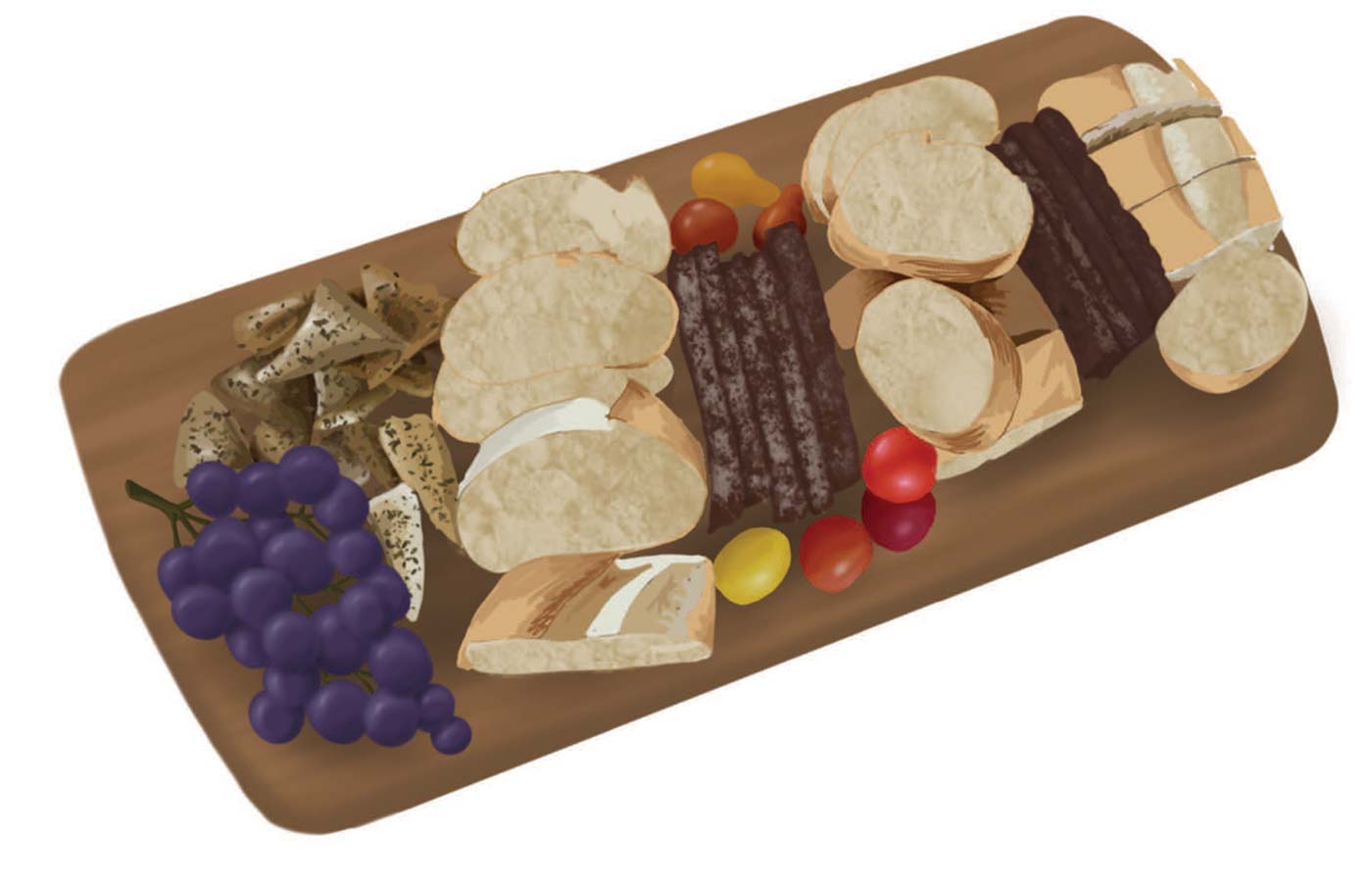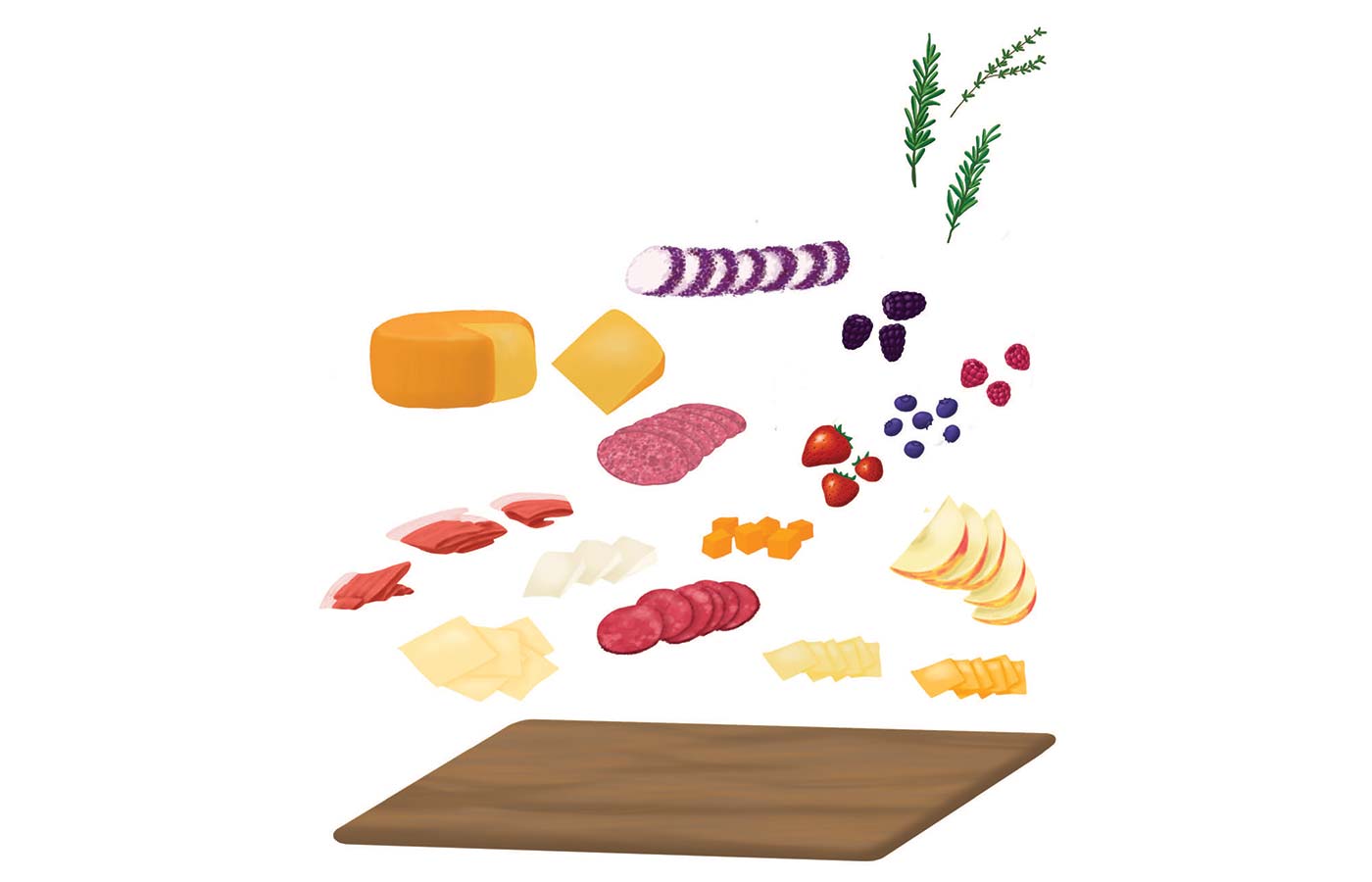Lessons from a Smorgasbord
“YOU HUNGRY?”
My paternal grandmother must have asked that question a thousand times in my little life. My answer was always yes. It was easy to say yes, not just because she offered everything under the sun to her grandchildren but because she did so with warmth and without judgment. With her, I never had to choose just one thing.
I spent a long time feeling untethered to both of my cultural identities: my Chilean mother, my Jewish father. And because technically Jewish heritage is passed on only from the mother’s side, I wasn’t sure where that put me. I didn’t have a bat mitzvah or quinceañera (which is mostly a Mexican tradition), never went to temple, and I wasn’t raised speaking Spanish. But what I did have was food.
One of the ways my grandmother showed her love was through her cooking. Though the circumstances of her youth are lost to lore, I knew she’d left, or fled, Turkey; that she grew up without much, including consistent meals; and she wound up in New York at some point. There’s a story that she was an orphan and lived in foster care until she met my grandfather. After they married, they moved out west to California, and the kitchen became a place where she wanted her family to gather.
As in most immigrant families, cooking became a way to honor heritage and find comfort while navigating grocery stores and new foods. My grandmother made it her mission to ensure her grandchildren were well-fed, loved and always had a seat at the table. Though my parents divorced when I was young, she never let that impact how she treated my mother or her grandchildren.
On the weekends I was with my father, we drove out to the San Fernando Valley to spend time swimming and eating and visiting with my grandparents. The first one to greet us was always my grandmother, arms eager to hug, a glowing smile lighting up her entire face, eyes shining like the sun catching glitter on my sneakers. She was a classic grandma in that she spoiled us with hugs, kisses and plenty of home-cooked meals.
“You hungry?” she asked us before the car door even closed. “Come, come, lunch is ready.”
Anytime we walked into our grandparents’ cul-de-sac home, the smells reached our noses first. Sweet and savory with the buzz of the television in the background let us know it was time to relax.
“What do you want?” she said, fridge door open and waiting. But there was already a spread on the table and kitchen countertops.

Though we didn’t celebrate religious holidays, every meal still had a feeling of celebration. Here we were gathered, here we were happy.
The smorgasbord of food was ample and diverse. Mac ’n’ cheese for my sister, roast beef for my father, egg salad, matzo ball soup, ambrosia, eggs, halva, dried apricots, tomatoes, jams, puddings. Though we didn’t celebrate religious holidays, every meal still had a feeling of celebration. Here we were gathered, here we were happy.
But it wasn’t always a piece of cake. My grandmother cooked through the grief of my father’s brain cancer. She cooked through the return of her own breast cancer. In the ’90s, we didn’t have dialogue around trauma, but looking back now I suspect there was a calm and control through sautéing and mixing that she lacked in the waiting rooms as the mother of a son who was dying. The kitchen had a meditative quality and it took her mind off reality for a while. She even had the cooking channel on during her own hospital stays, where she was enchanted by midnight reruns of Emeril Lagassé. “It’s twoa- clock in the morning,” she’d say in her particular accent. “And he’s there with the g*d damn BAM!” She smiled whenever she imitated Emeril’s high-energy catchphrase.
But it was more than food. The diversity of my grandmother’s kitchen table showed that there was space for it all. She introduced small pieces of her own heritage in ways that felt accessible, digestible and ready for us to learn about.
I wish I had been old enough to ask, curious enough to say something beyond, “That’s yummy!” Often it was us sitting down to eat as she fluttered around us light and happy as a butterfly, whistling, singing, and asking how our week was. We then rushed back to go play, leaving her to clean up the mess.
Back then I didn’t have an interest in cooking, but I was a good eater. It was rare I turned up my nose at a food and I think this is partly because of my grandmother’s varied way of feeding us. A little of this, a scoop of that.
This last holiday season, I found myself mixing and matching while putting together a charcuterie board. There was room for everything— the nuts, the dried and fresh fruit, the pickles, the hummus, the gluten-free breads alongside the sourdough slices, various cheese and meats, empanadas, menemen. It showed up as this playful, choose-your-own-adventure love note that reflected our cultures, one that encouraged guests to eat, drink and be merry. That whatever was on their plate was OK.
While food might be trivial for some—or about survival, necessity and routine for others—for my grandmother it was an invitation. By allowing room for different types of food, especially from places I’d yet to experience first-hand, it expanded my sense of what was possible. As an adult it made it easy to say yes to trying Ethiopian injera and miser wat, or fermented stingray with a cup of makgeolli and even marmite on toast.
Many chefs do this now with fusion foods, taking aspects of their culture, identity and parts of their story to show there are more ways than the traditions we’ve grown accustomed to.
My grandmother passed away just when I was starting to take an interest in cooking, and I don’t have the chance to preserve that piece of my history. But I can honor her with her attitude towards food and life and through representing various cultures with their dishes, making room for it all.





